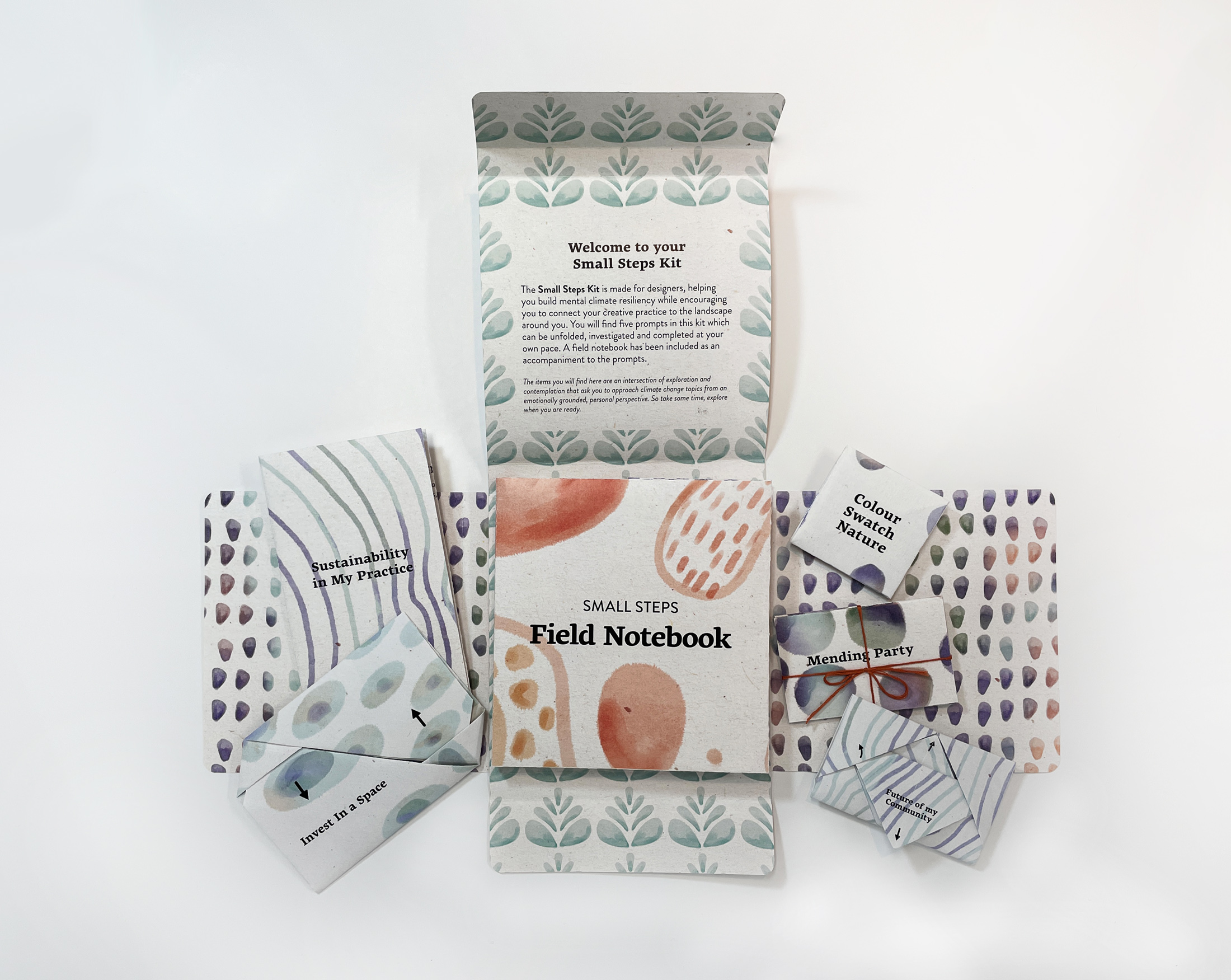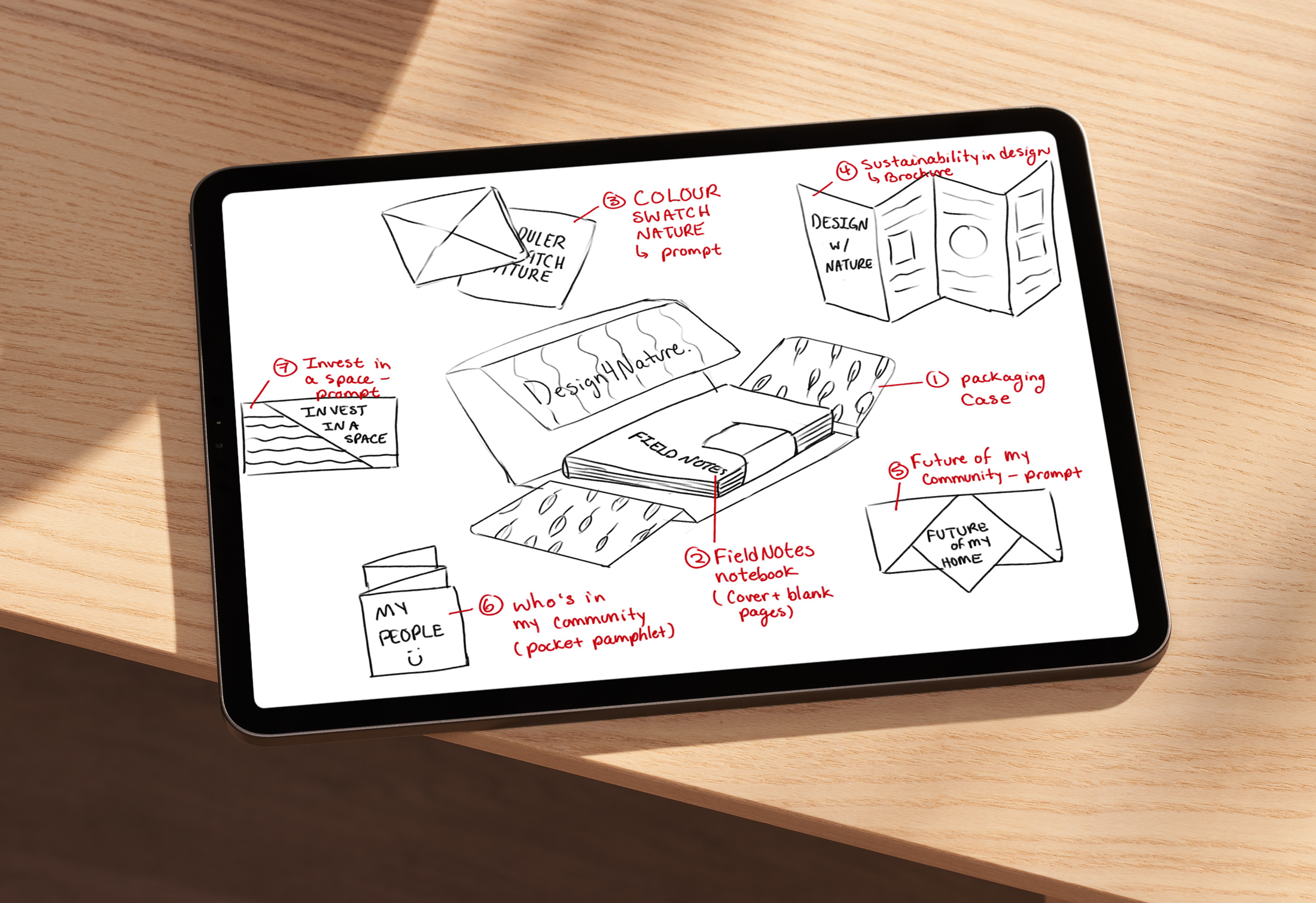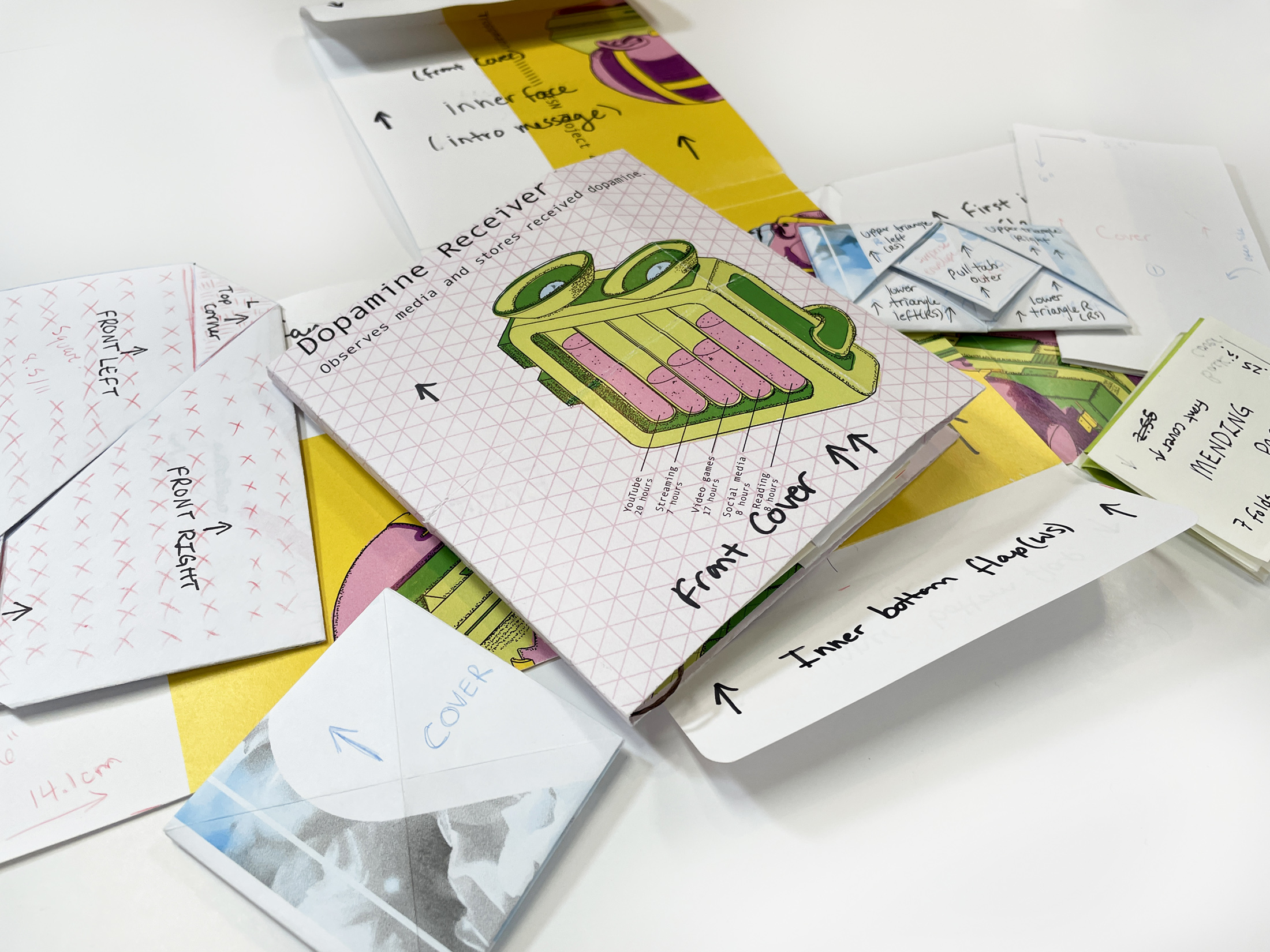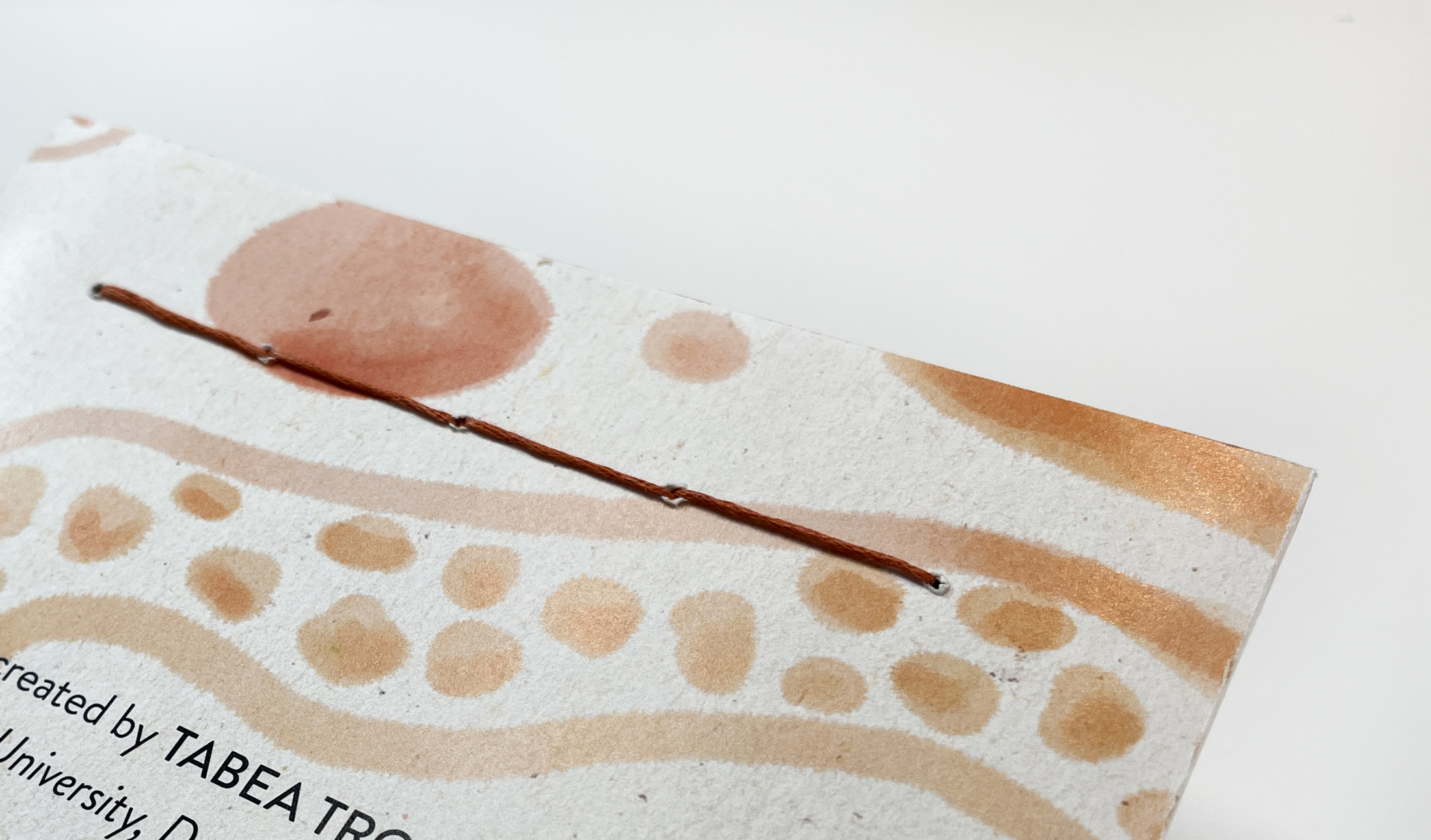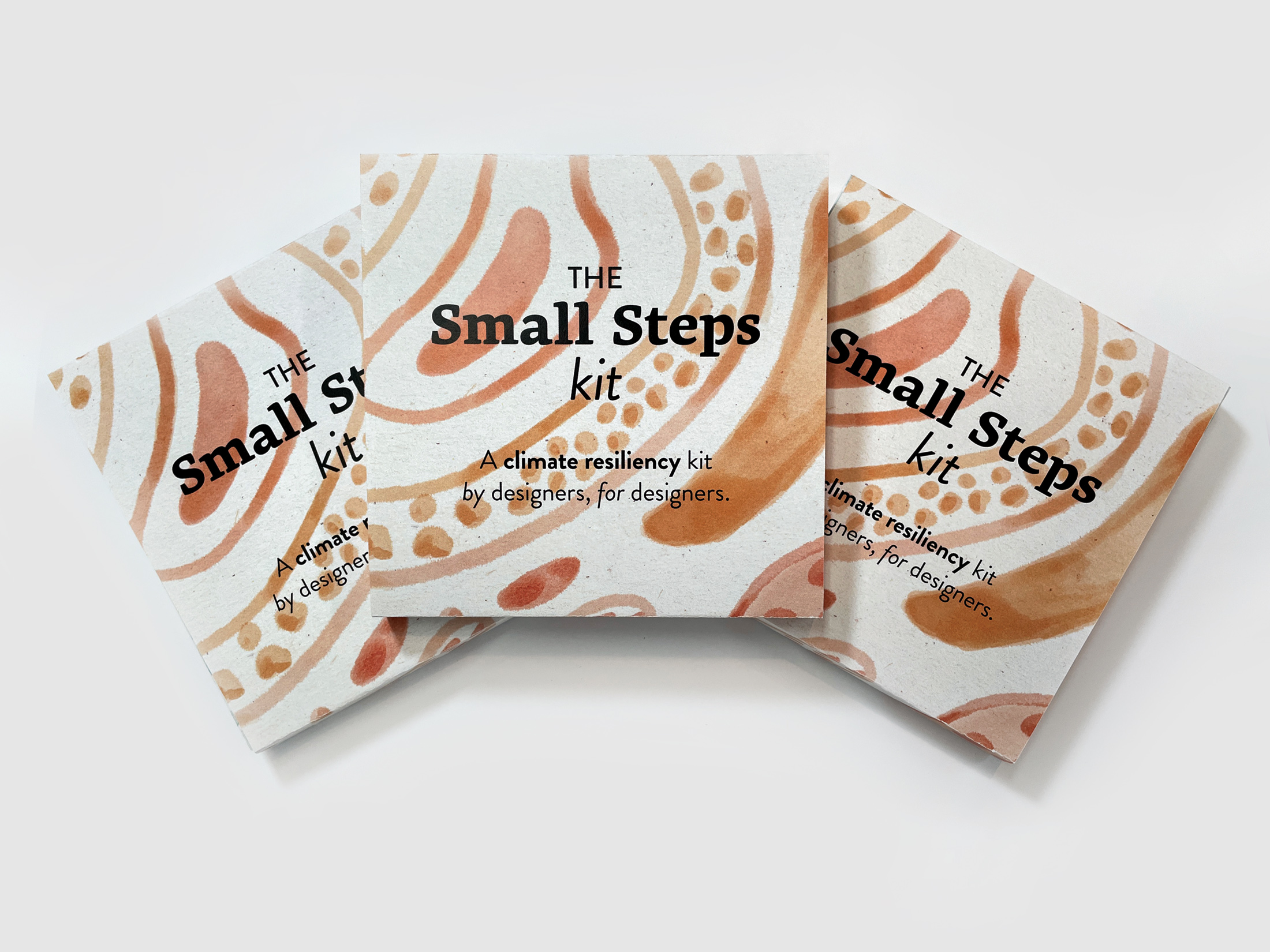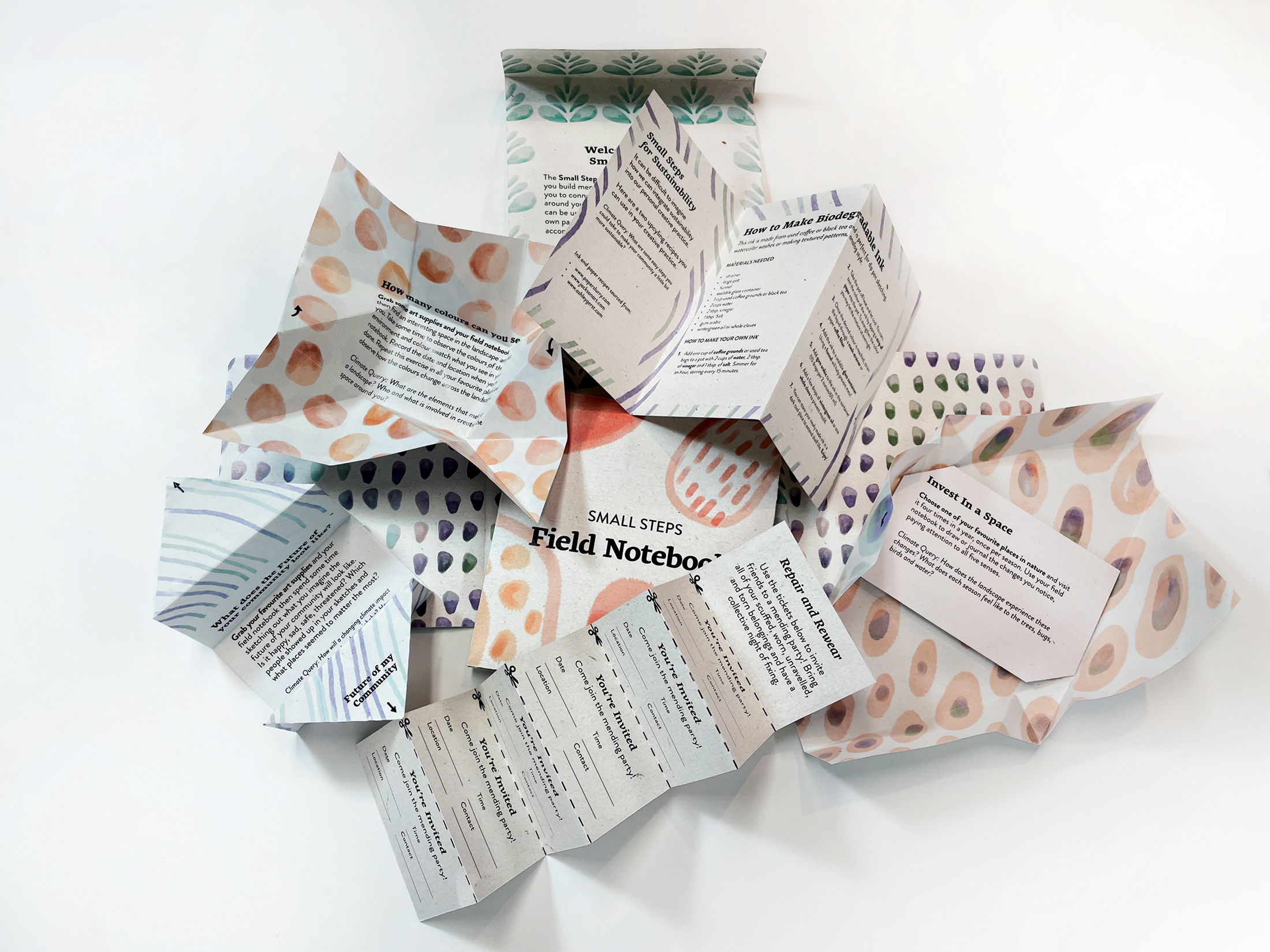The Small Steps Kit is made for designers and artists, intended to help build mental climate resiliency while encouraging them to connect their creative practice to the landscape around them. The items included are an intersection of play, exploration and contemplation that encourage users to broaden their empathy while approaching climate change topics from an emotionally grounded, personal perspective.
Using the conclusions from my research I created a framework to guide the development of the kit. Specifically, I determined that all activities must have an optimistic tone and be a physical, tangible experience. Each activity must also fall into one of four categories: emotional connection, community building, accessible actions and imaginative experiences. This early diagram was the guiding structure for my mockup, outlining the seven components I would construct.
Inspired by origami folding methods, I combined package design, print design and paper sculpture to create small packages that unveiled the content as users interacted with the artifact. Specific folded patterns were selected for each element, carefully chosen for the aesthetic, physical experience they provided to the user. Keeping with the spirit of sustainability, I used past project test prints to create the paper mockups for each element.
Because sustainability was a core tenet of this project, the seven designed elements of the Small Steps Kit are entirely biodegradable. For example, the packaging is constructed out of paper and waxed cotton thread, stitched together in an effort to avoid glue, staples or tape.
The final package came together as I worked through ideas on how to create an engaging experience. I kept returning to the idea of a gift, ready to be unwrapped and explored. So while it is made from paper, the Small Steps Kit feels inviting, with each element carrying a weight and purpose that invites users to engage.
